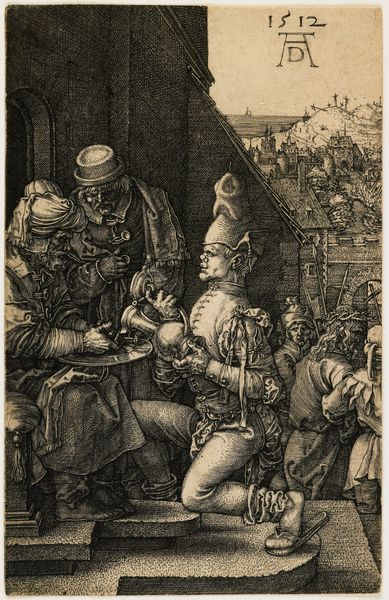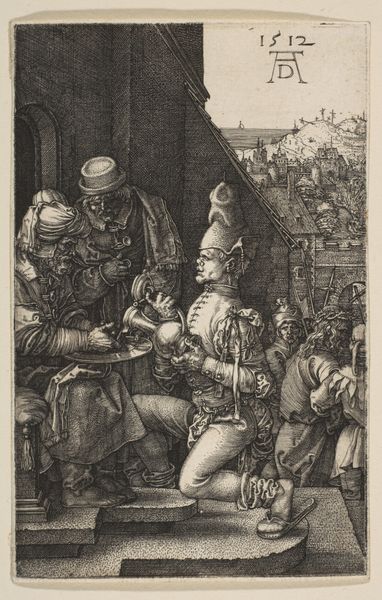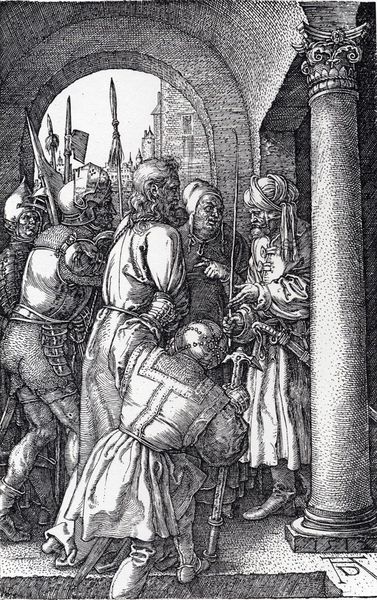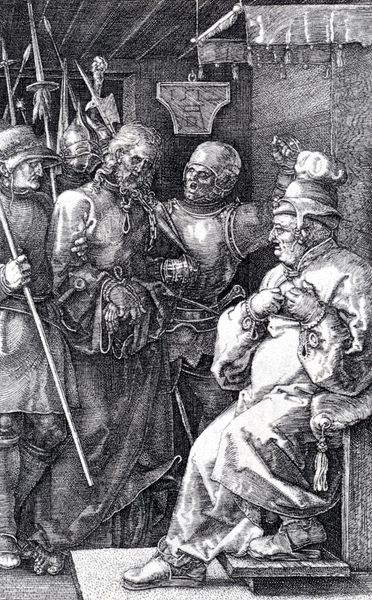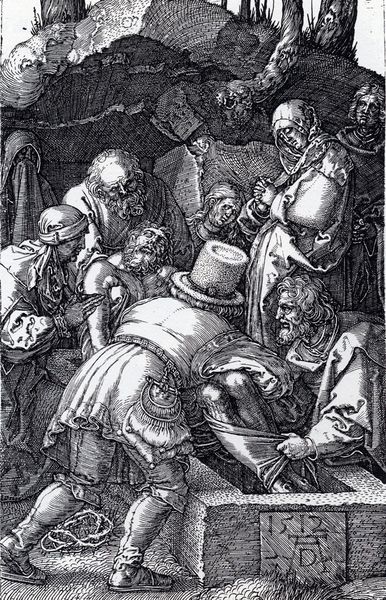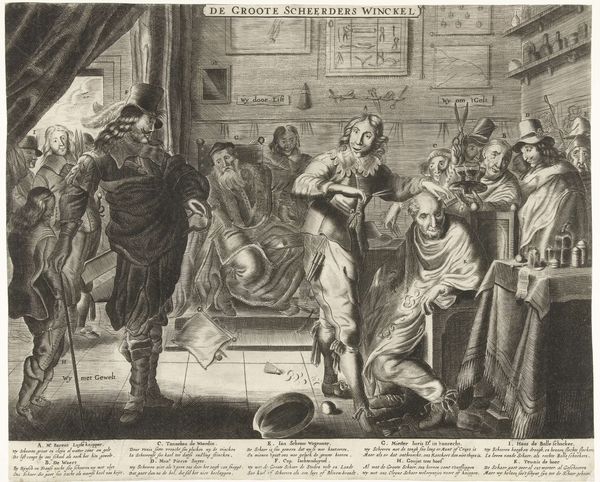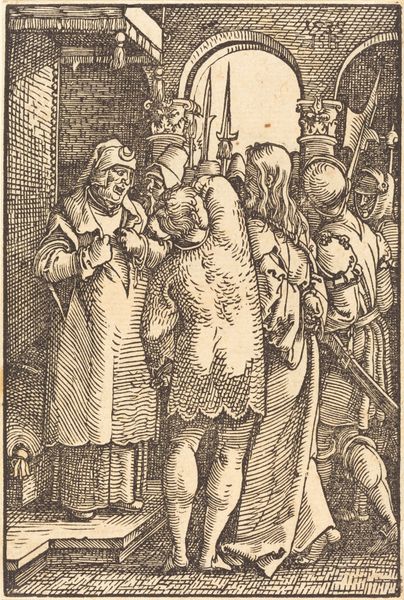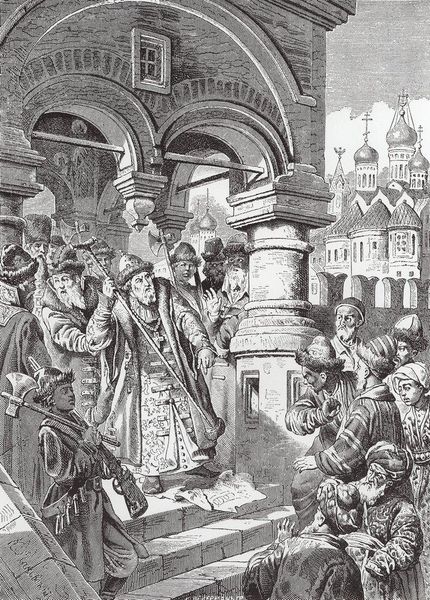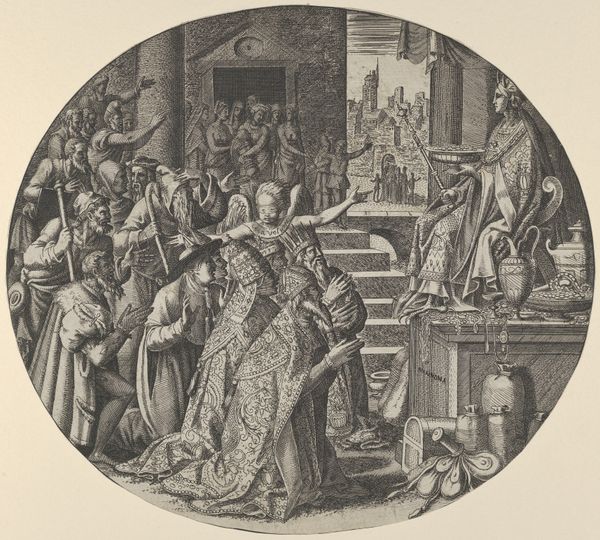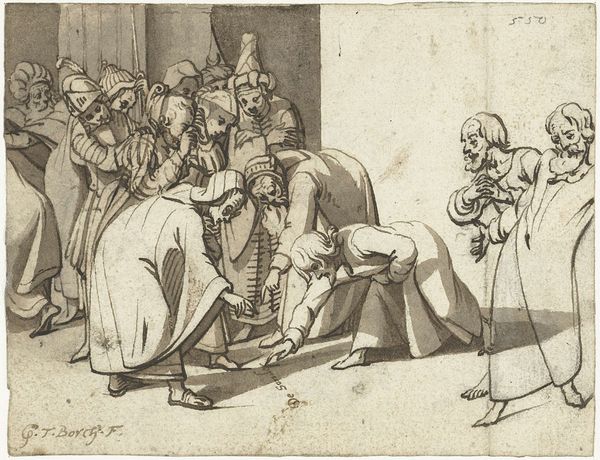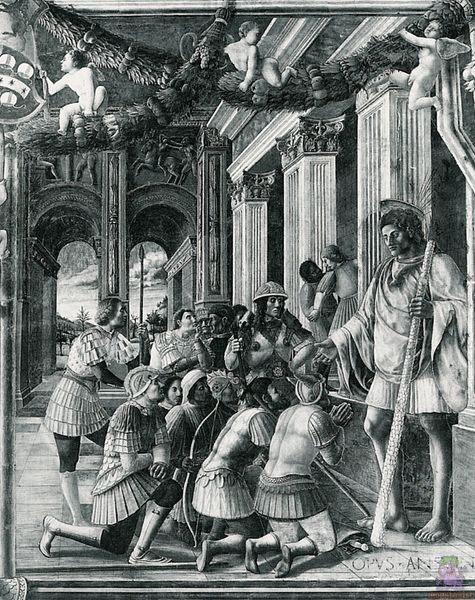
drawing, print, engraving
#
drawing
# print
#
charcoal drawing
#
christianity
#
history-painting
#
northern-renaissance
#
engraving
Copyright: Public domain
Curator: Looking at Albrecht Durer's engraving from 1512, titled "Pilate Washing his Hands", one immediately notices the stark contrast and the intricate detailing packed into a small space. My first impression is the unsettling juxtaposition of nonchalance and brutal judgment. What strikes you first? Editor: The immediate impression is claustrophobia; the intense cross-hatching and dense arrangement of figures create a tightly-packed scene, which effectively traps the viewer in this moment of dramatic irony. Look at the meticulous use of lines that build up depth and shadow. Curator: Absolutely. The detail heightens the dramatic tension. Pilate washing his hands is a deeply symbolic gesture. Throughout history, water has been used to signify purification, but here it represents his denial of responsibility for the fate of Jesus. We see how Durer employs a known visual paradigm and yet completely turns it on its head by connecting it with dereliction. Editor: The semiotics of this image is fascinating. Consider how Durer organizes the space—Pilate is physically separated, almost encased within the architectural setting, while the mob is literally rising up and behind him to the right of the print, closing in on the composition's background. This division underscores his moral isolation. It is a very structural device that enhances this contrast in behaviors and social position. Curator: Indeed, that physical barrier highlights the psychological one. In terms of cultural memory, Durer captures a pivotal moment—one where the act of refusing accountability carries immense historical weight. It touches upon questions of justice, power, and moral courage, and reminds viewers that denial can often lead to more significant ramifications than action. The symbolic power of that simple act is huge and its ripple effects endure over centuries, just as the print endures over time. Editor: And the formal arrangement reinforces the gravity! See how the diagonal thrust of the steps lead our eyes to Jesus? Whereas Pilate’s ritual occurs stage-left almost as a subsidiary function! His moral abdication occurs against the powerful ascendancy of the Passion narrative! Curator: It is powerful that an image from over 500 years ago can still generate so much conversation and invite us to contemplate its deeper significance. Editor: Durer masterfully constructs a viewing space for profound introspection into individual agency, group behavior, and the enduring consequences that actions might carry.
Comments
No comments
Be the first to comment and join the conversation on the ultimate creative platform.
